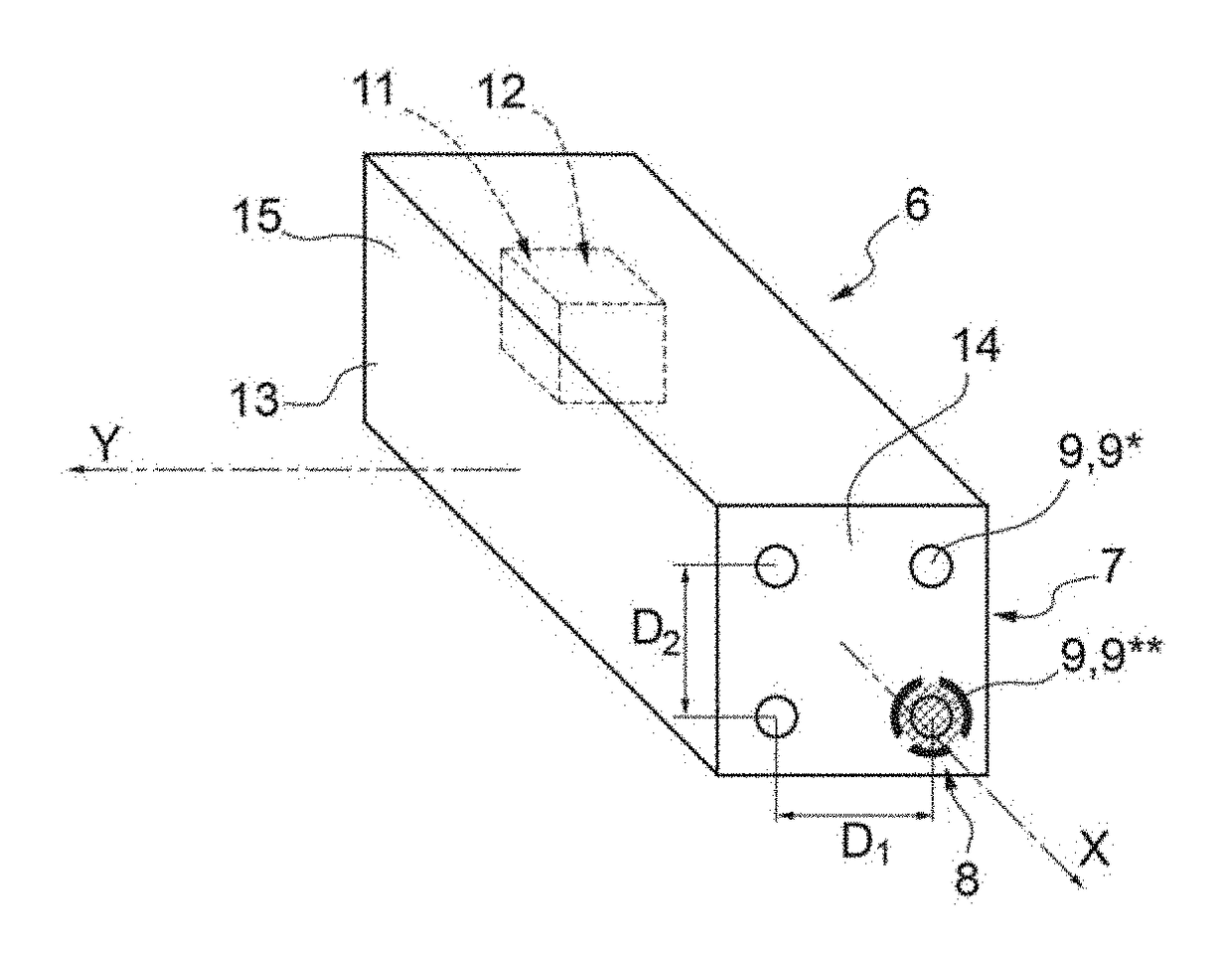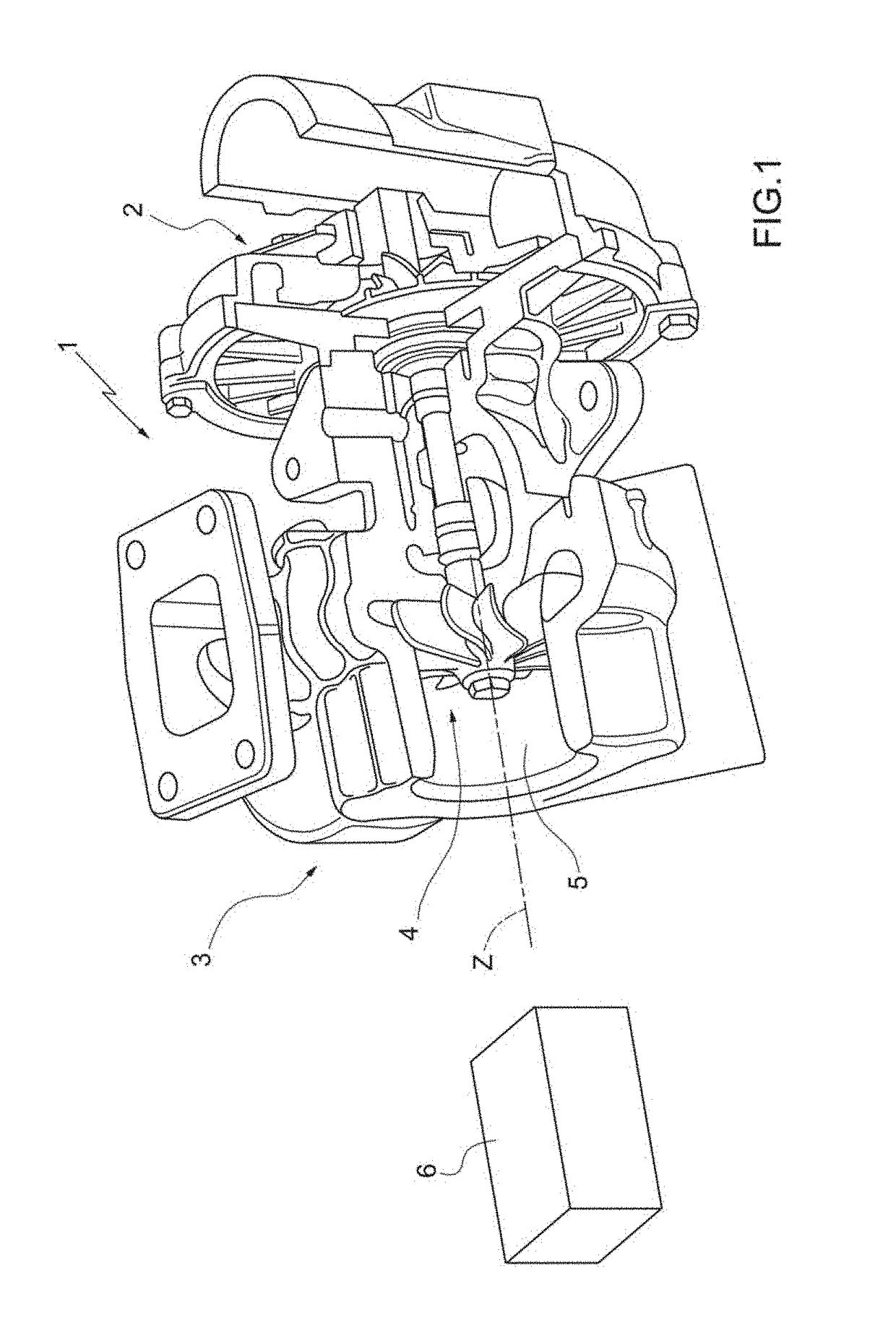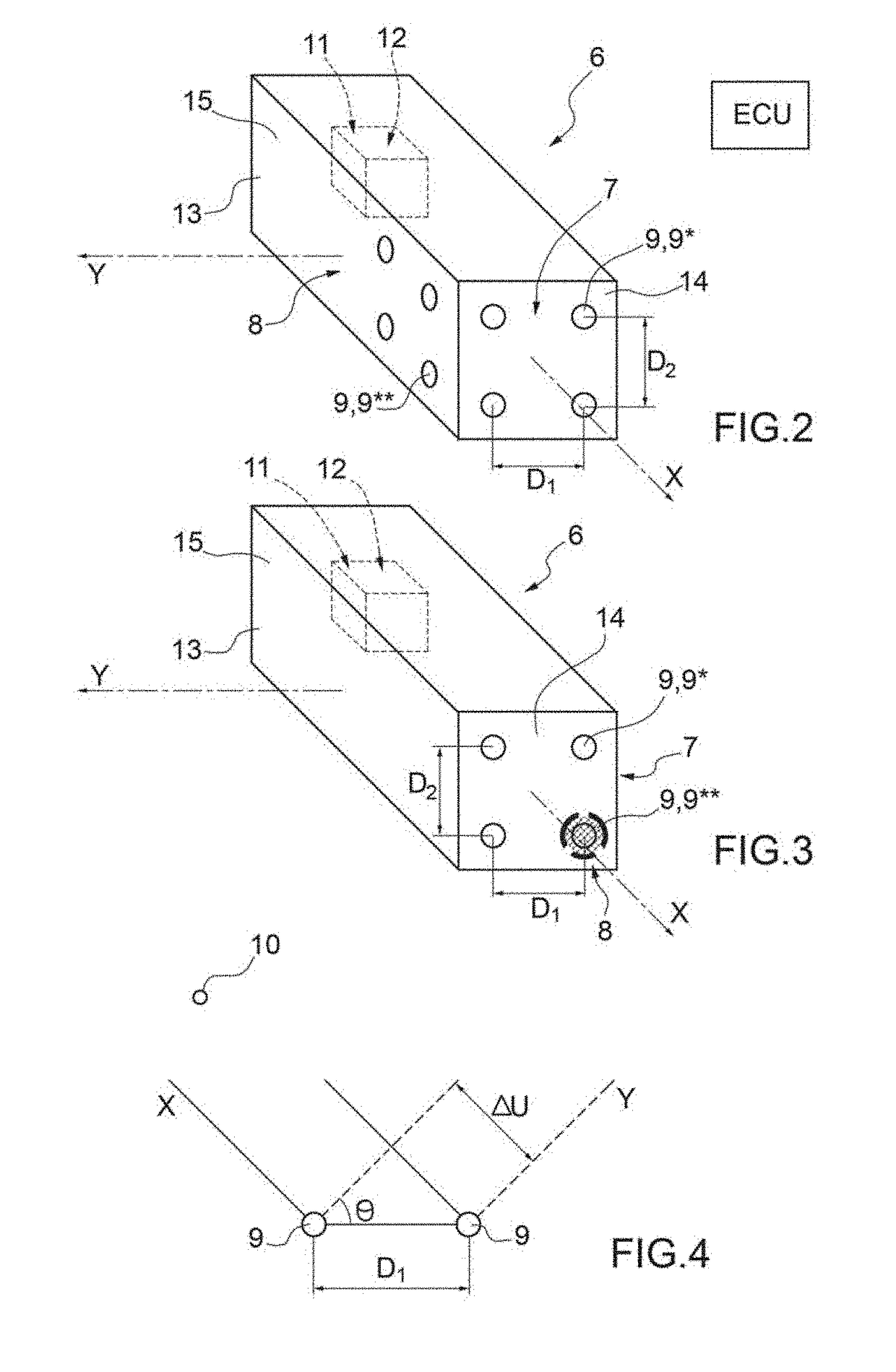Device for the acquisition and conditioning of an acoustic signal generated by a source of an internal combustion engine
- Summary
- Abstract
- Description
- Claims
- Application Information
AI Technical Summary
Benefits of technology
Problems solved by technology
Method used
Image
Examples
first embodiment
[0023] shown in FIG. 2, the support body 13 has the measuring assembly 7 in the area of a front wall 14 and the measuring assembly 8 in the area of a side wall 15, arranged orthogonal to the front wall 14. In other words, the measuring assembly 7 is formed in the area of the front wall 14 that is arranged orthogonal to the provenance direction X; whereas the measuring assembly 8 is formed in the area of the side wall 15 that is arranged orthogonal to the provenance direction Y. In this case, the provenance direction X is orthogonal to the provenance direction Y.
[0024]In this embodiment, the measuring assembly 7 comprises, respectively, at least two microphones 9*, in particular four microphones 9* arranged in two rows and two columns and equally spaced from one another. Similarly, the measuring assembly 8 comprises, respectively, at least one microphone 9**, in particular four microphones 9** arranged in two rows and two columns and equally spaced from one another.
second embodiment
[0025] shown in FIG. 3, the support body 13 has both the measuring assembly 7 and the measuring assembly 8 in the area of the front wall 14.
[0026]In this embodiment, the measuring assembly 7 comprises three microphones 9*, while the measuring assembly 8 is formed with a single microphone 9**. The four microphones 9 are arranged in two rows and two columns and are equally spaced from one another. The measuring assembly 8 is obtained by screening a microphone 9. In this way, despite being arranged with the same orientation of the microphones 9*, the microphone 9** will not be able to detect the signal SX in the provenance direction X (being screened along said provenance direction X) and can only acquire the signal SY along the provenance direction Y.
[0027]In other words, in this embodiment, the detection assemblies 7, 8 are arranged in the area of the same front wall 14 of the support body 13 which is arranged orthogonal to the provenance direction X, but at least one of the micropho...
third embodiment
[0040] not shown, the device is provided with a further measuring assembly equipped with at least one microphone 9**. In particular, the measuring assembly 16 is adapted to acquire the sound signal S along a third direction, different with respect to the directions X and Y, so as to obtain a spatial directivity.
[0041]In the foregoing description, reference was explicitly made to the processing of the sound signal S generated by rotation of the bladed disk 4 of the turbocharger 1*, but the device 6 for the acquisition and conditioning can be used for the processing of the sound signal S generated by any component arranged in the engine compartment.
[0042]It is to be understood that, depending on the phenomena to be measured or monitored, it is possible to arrange special filtering chains that allow for isolating the components at different frequencies typical of related phenomena.
[0043]The device 6 for the acquisition and conditioning of the sound signal S described hitherto has a few...
PUM
 Login to View More
Login to View More Abstract
Description
Claims
Application Information
 Login to View More
Login to View More - Generate Ideas
- Intellectual Property
- Life Sciences
- Materials
- Tech Scout
- Unparalleled Data Quality
- Higher Quality Content
- 60% Fewer Hallucinations
Browse by: Latest US Patents, China's latest patents, Technical Efficacy Thesaurus, Application Domain, Technology Topic, Popular Technical Reports.
© 2025 PatSnap. All rights reserved.Legal|Privacy policy|Modern Slavery Act Transparency Statement|Sitemap|About US| Contact US: help@patsnap.com



